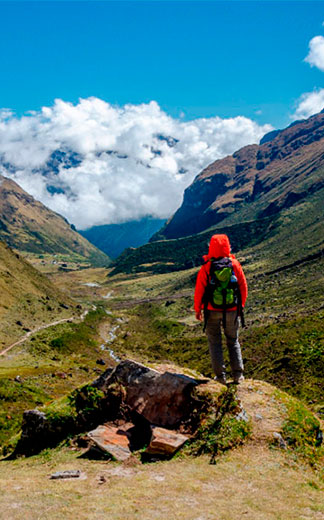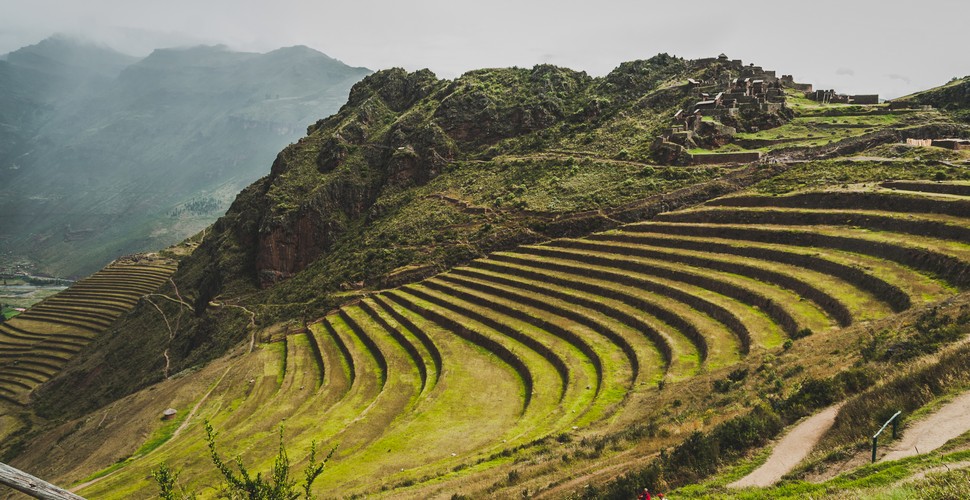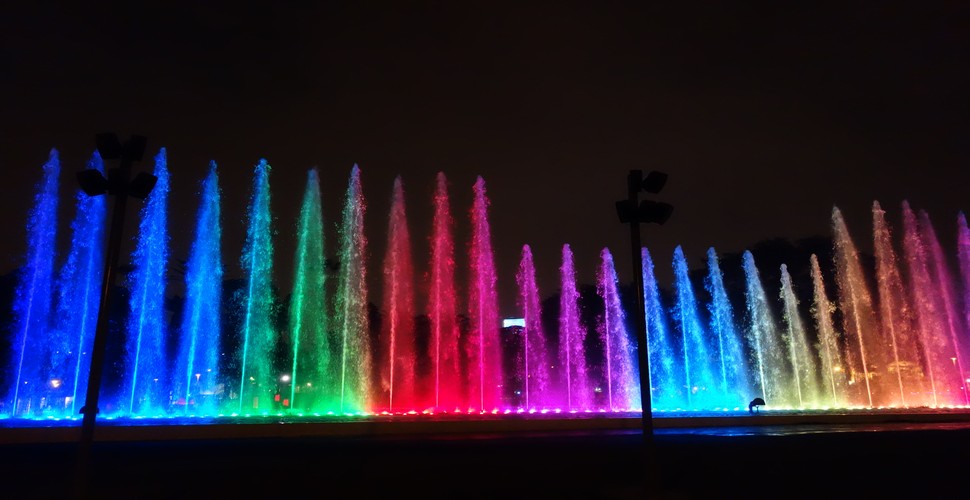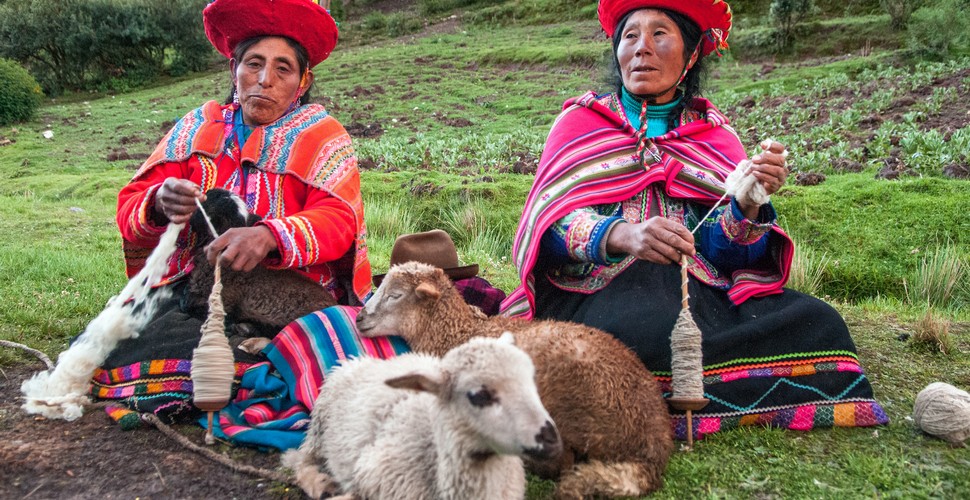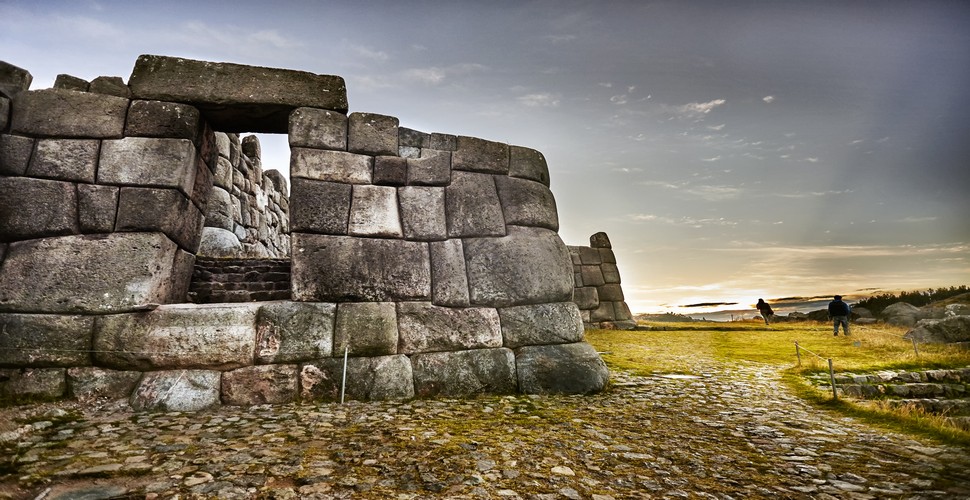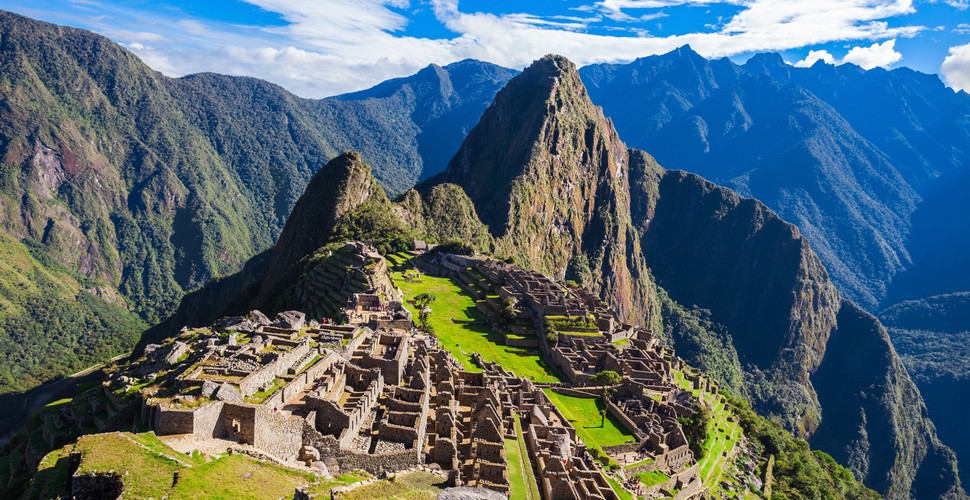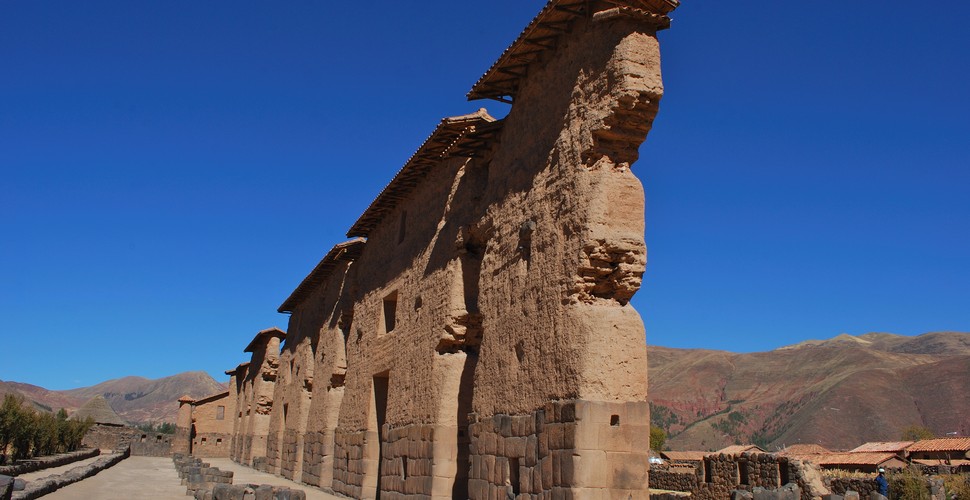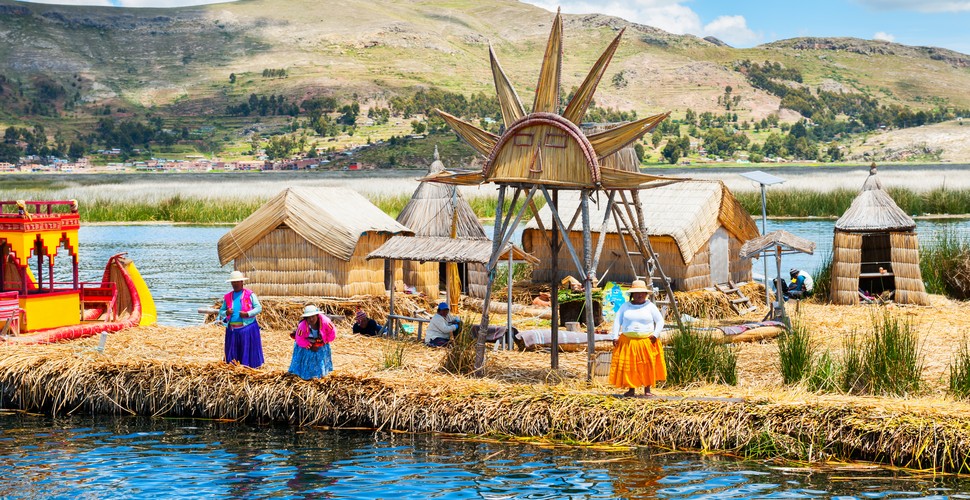

Claire Dean
Travel in South America is a joy to behold. The rich variety of destinations, experiences, landscapes and geography fascinated me so much, that I chose to relocate here, over 20 years ago! The best thing I ever did! Allow me to share my knowledge and passion for Central and South America with you and help you plan your holiday of a lifetime!

10-Day Best of Peru Tour
Written by:Claire Dean
Published: 2023-02-08
Peru is all about drama. Travel through the country will take you through soaring mountains to plunging valleys, dotted with ancient ruins alongside modern farms and towns. These different landscapes will demonstrate the glory of South America. In this 10-day Peru itinerary, you will witness numerous ruins throughout the Sacred Valley, the imposing Machu Picchu, islands in Lake Titicaca, and the sights of the larger cities of Cusco and Lima. This 10-day tour offers the best of Peru and what this country has to offer every traveler.
Pisaq Terraces
Lima Peru's capital.
Barranco stands out in Lima. Its walls are filled with street art, and the buildings are bright and colorful, offering a bit of a respite from Lima‘s grey skies. Barranco has been home to some of Peru’s and Latin America’s finest artists, offering them beauty and inspiration. Gourmet restaurants mix with artsy cafes and a booming nightlife in this bohemian Lima suburb. The center of the Lima tour focuses on the area around Plaza de Armas and its impressive colonial architecture. See the changing of the guard at the Palacio de Gobierno del Perú. The ceremony is surprisingly long and involved and takes about an hour. Lima’s historic center is very compact and that makes it great for exploring on foot. Plaza Mayor, also known as Plaza de Armas, is the beating heart of the downtown, and within a 2-block radius, you’ll find enough sites and attractions to keep you busy for the whole day. Lima Cathedral that dates back to 1535. Inside you’ll find the tomb of Francisco Pizarro – yes, we’re talking about the Spanish conquistador who conquered the Incan Empire. If you keep your eyes peeled you’ll notice how Catholicism blends together with the Inca belief in Pachamama, namely when you look at the statues of the Virgin and how she’s depicted wearing a wide cape that’s meant to resemble a mountain. I would recommend taking a guided tour of the church so that you can learn the cool history behind the place. San Francisco, which is one of the coolest sites in the historic center. You can only visit as part of a guided tour and no photography is allowed once you walk through the main doors, but inside you’ll find: a library with over 25,000 antique texts that date back to the start of the colony, a cloister surrounded by paintings with Peruvian subject matter and catacombs where more than 25,000 people were laid to rest before the city opened its first cemetery.
Lima Water and Lights Park
Cusco, the holy Inca city.
Cusco’s Plaza de Armas is the cultural center of the city. Lining the Plaza de Armas are restaurants, bars, and coffee shops, many with a great view of the city, perfect for spending an afternoon people-watching and acclimating to Cusco’s elevation. At the heart of the plaza lies a manicured garden and an intricate statue of the Incan ruler Pachacuteq. Those willing to venture from the sun-soaked benches will appreciate a tour of Cusco’s massive cathedral, complete with a trip into the crypts. The cathedral, a symbol of the Spanish conquest, houses a replica of Da Vinci’s Last Supper: in a uniquely Peruvian touch, it has a guinea pig (cuy) on one of the plates. San Pedro Market is a spectacle to behold, filled with fruit, vegetable, and meat stands, as well as 30 stalls serving freshly squeezed juices. A lack of refrigeration means products are displayed open-air, and the freshest items are sold a first thing in the morning, so come early if you’re wanting to buy. For lunch, the market hosts a number of empanada and tamale vendors, as well as food stalls that serve a menu, at a very reasonable price. If you’re struggling with the altitude, pick up a bag of coca leaves here to chew on. The Korikancha combines the Spanish and Inca influences in Cusco. Once lined with lavish gold, this Inca Temple of the Sun was ransacked and destroyed by the Spanish before they built the Church of Santo Domingo on the site of the ruins. Today, the contrast between the church and temple foundation is striking, making for one of the more interesting sites in Cusco. Visitors can walk through the Spanish and Inca sections and take in the once-spectacular garden. What was once the region’s holiest site now serves as a testament to the brutal conquest of indigenous people and its after-effects.
Weavers Spinning
A 45-minute walk or a 10-minute car journey from the city center the Saqaywaman Inca site is worth the trek for both the stunning views of Cusco and the incredible stonework. Saqsaywaman was a religious site as well as the scene of a bloody battle between Inca forces and the Spanish conquistadors. Hire a guide for a small fee, or purchase a city tour that includes the site for a complete explanation of the history of Saqsaywaman. Valuable as a precursor to Machu Picchu and sites in the surrounding Sacred Valley, a walk to Saqsaywaman also includes a glimpse of Cristo Blanco, the massive statue of Christ that stands above the city.
Saqsaywaman
Machu Picchu Inca citadel.
Visiting the ancient Incan citadel of Machu Picchu often sits at the top of many bucket lists. After all, it is one of the New 7 Wonders of the World. Machu Picchu certainly lives up to the hype! We’ve never met anyone who disliked visiting Machu Picchu or was opposed to taking the trip. Everyone has their own tale to tell and even the most veteran travelers will tell you it is flat-out awesome. The Inca citadel is truly an extraordinary place, and you can’t help but be mesmerized when you arrive. A lost city of the Incan Empire that’s hidden deep in the jungle, sitting on top of the magical Andes, like what?! Beautiful yet so mysterious at the same time. You will have to pinch yourself to believe it. The thin mountain air, the views, the history, the journey…Everything adds up to an incredible moment that you will never forget for the rest of your life. Inside Machu Picchu, you have the option to climb either Huayna Picchu or Machu Picchu Mountain. Huayna Picchu is the famous peak seen in pictures of the citadel and Montaña Machu Picchu is the highest mountain in the surrounding area. These hikes require additional tickets and reservations. Speak to your travel advisor if you would like to climb one of the mountains at the time of booking!
Machu Picchu
The "Route of The Sun"
Andahuaylillas
To get to Puno, we head along what is known as the Route of the sun. We stop off at Andahuaylillas where we will visit the Saint Peter Apostle church, well known as the “Sistine Chapel of the Americas”, located in Quispicanchi province, Cusco. You can find inside a Mudéjar-style painted ceiling (Mudéjar being a Spanish artistic style with Moorish influence). The interior walls are covered in Baroque frescoes by artists from the Cusco School of art, the colonial and religious artistic tradition.
Raqchi, Temple of Wiracocha
Raqchi, the Temple of Wiracocha is one of the most outstanding places along the way. It stands over 92 meters long (302 ft) and 25.5 meters wide (84 ft). It is a two-story roof construction with windows and doors and a central adobe wall roughly 18 to 20 meters in height. On each side of the structure, there is a row of 11 columns, built to support the building. The foundation is made of carved stone and the rest is made of adobe and mud. You can also see The Colcas (warehouses) that were used to store food. These storehouses had grains, such as corn and quinoa, that would have been used for ceremonial purposes as well as pottery, woven cloth, and military equipment.
La Raya and The Hot Springs
La Raya is located in the district of Layo, at an altitude of 4328 meters elevation. It marks the border between Cusco and Puno regions and it is the highest point on the journey. The natural hot springs here have medicinal properties that help the treatment of rheumatism, as well as diseases of kidneys and joints.
Pucara
The archaeological site of Pucara is located 106 km from the Puno Region. It is an incredible place that is dedicated to craftwork and pottery. Pucara bulls or “Toritos de Pucara” are well known in many parts of the world for their curious appearance and appear on rooftops throughout the region as a good luck charm.
Racchi
Lake Titicaca
By motor boat, we will visit the Uros floating Islands. Stepping on the islands feels very much like a water bed and is somewhat spongy! We will see the houses, and the islands and meet its friendly inhabitants. The Uros people are descendants of one of the oldest South American civilizations. Enjoy the spectacular views offered by Lake Titicaca, from Taquile Island. There a unique community can be observed, their artwork is very appreciated and women are outstanding weavers, textile arts on the island have been declared the world’s heritage by UNESCO. A long path gradually ascending will take us to the village, the views are unique over this immense lake as we visit the communal cooperative. Lunch at one of the local restaurants and sample the delicious trout caught from the magnificent Lake Titicaca.
Uros Floating Islands
Book the Valencia Travel 10-day Best of Peru tour here!
